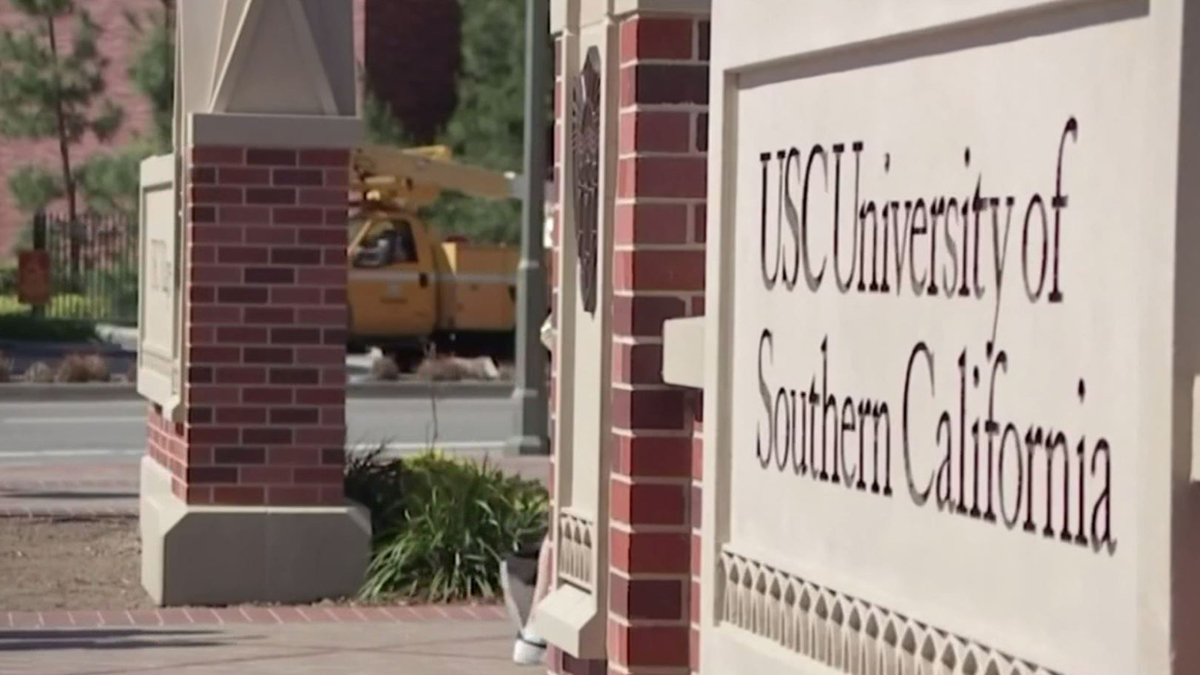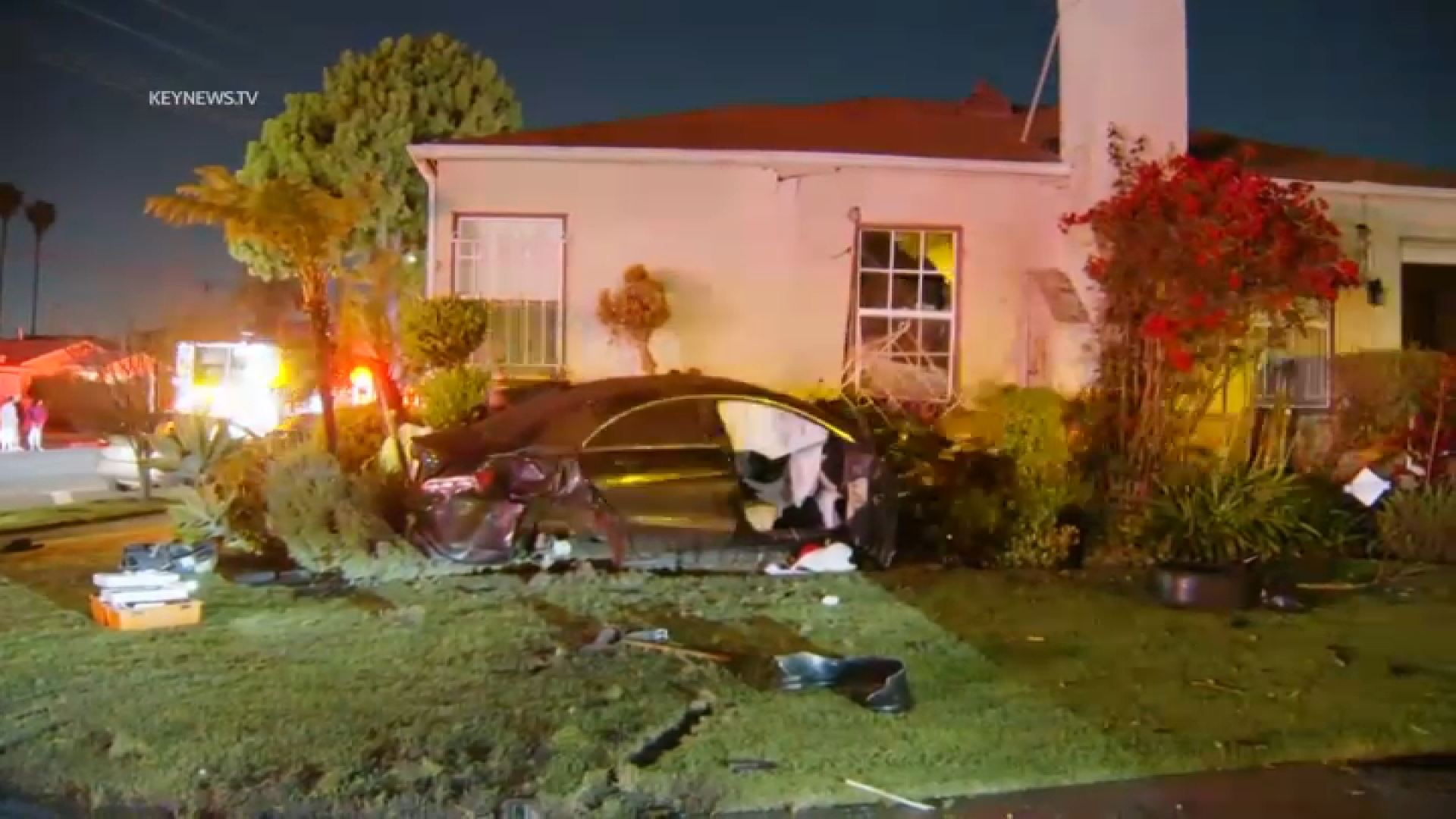It's a popular camp for kids that sits below one of the most contaminated sites in California.
Since the 1950s, thousands of children and young adults have spent time on the 2,600-acre Brandeis Bardin Institute. And for decades, while the campers played below, scientists were testing experimental nuclear reactors, rockets and weapons at the Santa Susana Field Lab which is nestled on top of a hill just south of the Institute.
The California Department of Toxic Substances Control (DTSC), the state's regulatory agency in charge of toxic waste cleanups, has declared the Field Lab contaminated and is preparing to make its recommendations regarding a cleanup.
An ongoing NB4 I-Team investigation of the Field Lab, "LA's Nuclear Secret," revealed new information about contamination at the Field Lab and the potential threat of toxic chemicals and dangerous radioactive material to offsite areas including the Brandeis Bardin Institute
Now, a year and half after "LA's Nuclear Secret" first raised questions about the safety of the camp, the DTSC has issued a technical memo declaring that "contamination at the Santa Susana Field Laboratory (SSFL) does not pose a threat to users of the Brandeis Bardin Institute, or other off-site areas."
On its website, the camp's owner, the American Jewish University, wrote "We could not be more pleased that the DTSC has now affirmed officially, publicly and definitively what they have been telling us all along — the Brandeis-Bardin property is safe."
But a DTSC whistleblower and other experts say the memo is a "whitewash" and an attempt by the controversial state toxics agency — the DTSC — to minimize possible health risks to kids at the camp.
"All it's going to do is leave a question mark," said a long-time employee of the agency who has worked on the Santa Susana Field Lab issue, and asked us to protect their identity out of fear of retaliation. "It just doesn't seem like it's a decision I would trust if I was a member of the public."
The DTSC insider reviewed emails, obtained by NBC4 through a public records request, from a top camp official to the DTSC's man in charge of the Santa Susana Field Lab cleanup. In the emails, the camp official asks the DTSC to say the camp is safe. The DTSC whistleblower said it "seems like collusion" between the camp and the state toxics agency to come up with "a predetermined conclusion."
According to the time stamp on the email, one was sent the same day that NBC4 aired the first of several reports exposing the risk of contamination at the camp, as part of its "LA's Nuclear Secret" series.
In the email to DTSC Project Team Manager Mark Malinowski, Rabbi Jay Strear of the American Jewish University writes "the KNBC report creates an urgent matter for us. I need to speak with you asap and am willing to come to Sacramento to meet with you {sic} any other needed DTSC officials."
Strear goes on to attack the facts of the NBC4 reports, saying "we are in a highly compromised position and believe the only repair is through a definitive statement by DTSC substantiating your stated position that our property is safe." He ends the email by saying, "Timing is most critical. We must produce something in the next 24 hours or we risk significant damage."
In other emails, Strear writes, "as a result of the KNBC reports, we are dealing with a major PR crisis" and "I can be in Sacramento by 2pm."
According to other emails, a private meeting was scheduled at the Brandeis Bardin Institute with DTSC officials. Carbon copied on the emails about the meeting where representatives of the U.S. Department of Energy and NASA. Both agencies were responsible for much of the contamination of the Field Lab and both are facing multimillion dollar cleanups of the site.
Weeks after the meeting, the American Jewish University said on its website and in an email to supporters, "DTSC has confirmed the safety of the Brandeis Bardin campus." But when NBC4 asked the Director of DTSC, Barbara Lee, whether her agency had indeed confirmed the safety of the site, she told us, "I'm not certain. I'm going to have to look into that." She never got back to us.
And at a meeting in March, Mohsen Nazemi, a DTSC Deputy Director, was asked by an audience member if the DTSC believes "there is no increased health risk to people offsite" of the Santa Susana Field Lab. His response, "I'm actually not ready to answer that question tonight. But I will be happy to get back to you on that."
Nearly two months after the meeting and more than a year and half after NBC4 first raised questions about the safety of the camp, the DTSC issued their Technical Memo.
News
Top news of the day
"It seemed not really a technical analysis but rather a piece of propaganda to provide cover for the operators of the camp," said Dan Hirsch, Director of UC Santa Cruz's Program on Environmental and Nuclear Policy. "They ignore large amounts of data that show contamination."
Hirsch has been advocating for a full cleanup of the Santa Susana Field Lab for decades and has advised US senators, members of Congress, and local public officials on the topic.
"They leave out all of the data and all of the studies that would produce a contrary result to the one they want," said Hirsch, referring to two federally funded studies about the impact of the Field Lab on local neighborhoods.
In a 2015 editorial in the Ventura County Star, the lead authors of those studies, Dr. Yoram Cohen, a professor of chemical and biomolecular engineering at UCLA, and Dr. Hal Morgenstern, a professor of epidemiology and environmental health sciences at the University of Michigan, explained the significance of their findings:
"The UCLA study found evidence of potentially significant off-site exposures to hazardous chemicals and radioactivity from SSFL. The second study found rates of key cancers in the community were more than 60 percent higher within two miles of the site than farther away."
Much of the Brandeis Institute is within two miles of the site according to Google Maps.
Dr. Cohen told NBC4 that he believes that as long as the Field Lab remains contaminated, there is risk of that contamination flowing offsite to areas such as Brandeis.
DTSC says those studies were opinions and did not provide additional data for their assessment on the safety of the Brandeis property.
In their memo, DTSC says it "reviewed data from a large number of investigations" including tests paid for by the camp and by federal agencies responsible for portions of the Field Lab's cleanup. Among the investigations DTSC says it reviewed in preparing the memo was a 2012 US EPA study of the radioactive contamination at the Field Lab.
In the memo, DTSC says the EPA study determined "the contamination did not migrate offsite." But the EPA told the NBC4 I-Team that's not true. In an email, the agency says "EPA did not report or draw conclusions regarding offsite migration of contamination" including Brandeis.
"DTSC is directly misrepresenting what EPA did. EPA took no measurements at Brandeis," said Dan Hirsch.
DTSC also doesn't mention in their memo that the agency did not take any of its own measurements or conduct any new testing of the Brandeis property while doing their recent analysis. The agency's findings instead rely primarily on data collected by the camp itself and organizations that ran and contaminated the Field Lab. And the report doesn't mention a test DTSC did perform in 2003 on a well on camp property. It found perchlorate, a chemical that can be found in rocket fuel.
The DTSC's report also shows that chemicals and radiation have been found recently at the camp. But the agency says they're at "levels that do not pose a risk to human health." That determination was made using safety standards developed by the United Stated Environmental Protection Agency (EPA). But an EPA official tells the I-Team that the DTSC did not use the most protective safety standards currently available.
"They were juggling the numbers to make it look like there was less risk than there really is," said Dan Hirsch.
Although he wasn't involved in the creation of the Brandeis Camp technical memo, the DTSC whistleblower says he's seen staff at DTSC manipulate data and studies to reach a predetermined conclusion.
"I've seen the final decision being manipulated. Basically documents or internal memos would be ignored," said the DTSC whistleblower.
Hirsch points out that by not using the most protective EPA safety standards, the DTSC is assuming no one at Brandeis will ever eat anything from camp's organic gardens or orchards or ingest any soil or water while playing on the site's rustic grounds.
"Their M.O. is to downplay and sweep under the rug the extent of contamination," said Liza Tucker, a consumer advocate with the advocacy group Consumer Watchdog.
Tucker has written several reports on the agency including Golden Wasteland, which contributed to the creation of an Independent Review Panel to investigate the DTSC. At the time, California Senate President pro Tempore Kevin de León called DTSC "an organization failing to protect the public from hazardous waste and contamination."
The Panel's work is ongoing.
"DTSC definitely has a history of saying that sites are safe when they're not. They specialize in that," said Tucker, who points to the agency's handling of the contamination of the Exide battery recycling plant in Vernon.
"DTSC is not functioning in a way that is robust in protecting public health," said the DTSC whistleblower. "It's an agency that has lost its way."
NBC4 asked DTSC for a one-on-one interview to discuss the emails and their camp report. They declined. Instead, the DTSC scheduled a conference call for reporters to ask questions. But the agency declined to discuss the emails and ended the call before we were done asking questions about the agency's findings. They also did not make the author of the report available for questions.
Many of the documents mentioned in the memo and cited during the media call where also unavailable for review because the DTSC's document website was not operational at the time. The agency would not extend to conference call so reporters could ask additional questions about the offline documents.
Since it took control of the camp in 2007, the American Jewish University has been unwavering in its position that their camp is safe. And repeatedly throughout their 53-page memo, the DTSC says "contamination at SSFL does not pose a health threat to users of Brandeis Bardin Institute, or other off-site areas." But during the media conference call, the DTSC did say its report does not assess whether previous campers were safe from contamination, during the camp's entire 60 year history.
The DTSC whistleblower who spoke to the I-Team says the only way to prove if the camp is truly safe is for an independent agency to conduct its own comprehensive tests on Brandeis soil and water.
Until that happens, DTSC critics like Dan Hirsch and Liza Tucker advise parents to be cautious.
"Under no circumstances should moms and dads take the word of these toxics regulators that the Brandeis site is safe," Tucker said.
To read the American Jewish University's complete statement regarding the DTSC Technical Memo on the Brandeis Bardin Campus, click here.



